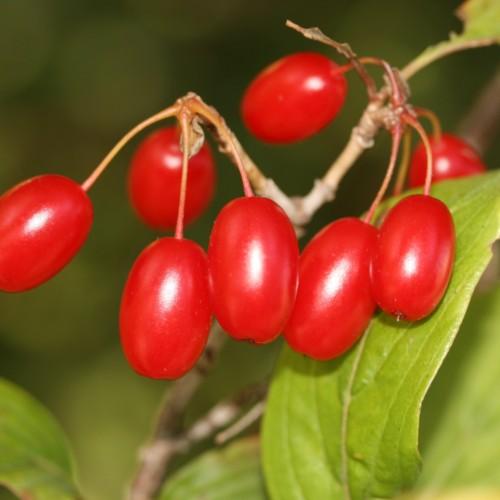
Japanese cornelian cherry
Cornus officinalis
Cycle:
Perennial
Watering:
Average
Hardiness Zone:
5 - 8
Flowers:
Flowers In Spring
Sun:
Full sun,part shade
Fruits:
Fruits Ready In
Edible:
Yes
Leaf:
Yes
Growth Rate:
Low
Maintenance:
Low
Salt Tolerant:
Yes
Care Level:
Medium
watering
Japanese cornelian cherry should be watered deeply to saturate the soil; aim for 1-2 inches of rainwater, or its equivalent in irrigation, per week. During hot periods, or when the soil is light or sandy, a deeper watering once or twice a week should be applied. The soil should be allowed to dry out slightly between waterings. Avoid overwatering, which can cause the roots to rot.
sunlight
Japanese cornelian cherry needs full sunlight all year round to thrive. In summer, it should get full sun for at least 8-10 hours a day. In winter, it needs some protection from wind and frost, so choose a sheltered spot for planting. It’s important to ensure that Japanese cornelian cherry is getting enough sunlight during its growth period. It can tolerate shade, but should get full sun for 6-8 hours a day for optimal growth and health. In more northern parts of the US, it is best to give the plant indirect sunlight or a shaded spot during the hottest hours of the day.
pruning
Pruning should be done twice a year for Japanese cornelian cherry (Cornus officinalis). In late winter or early spring, prune away crossing or dead branches. Then in late winter/early spring again, prune for shape and size. Be careful when pruning, as Japanese cornelian cherry does not respond well to hard pruning. If you need to reduce the size of the shrub significantly, it is best to do so over a period of years by gradually removing the larger branches.
